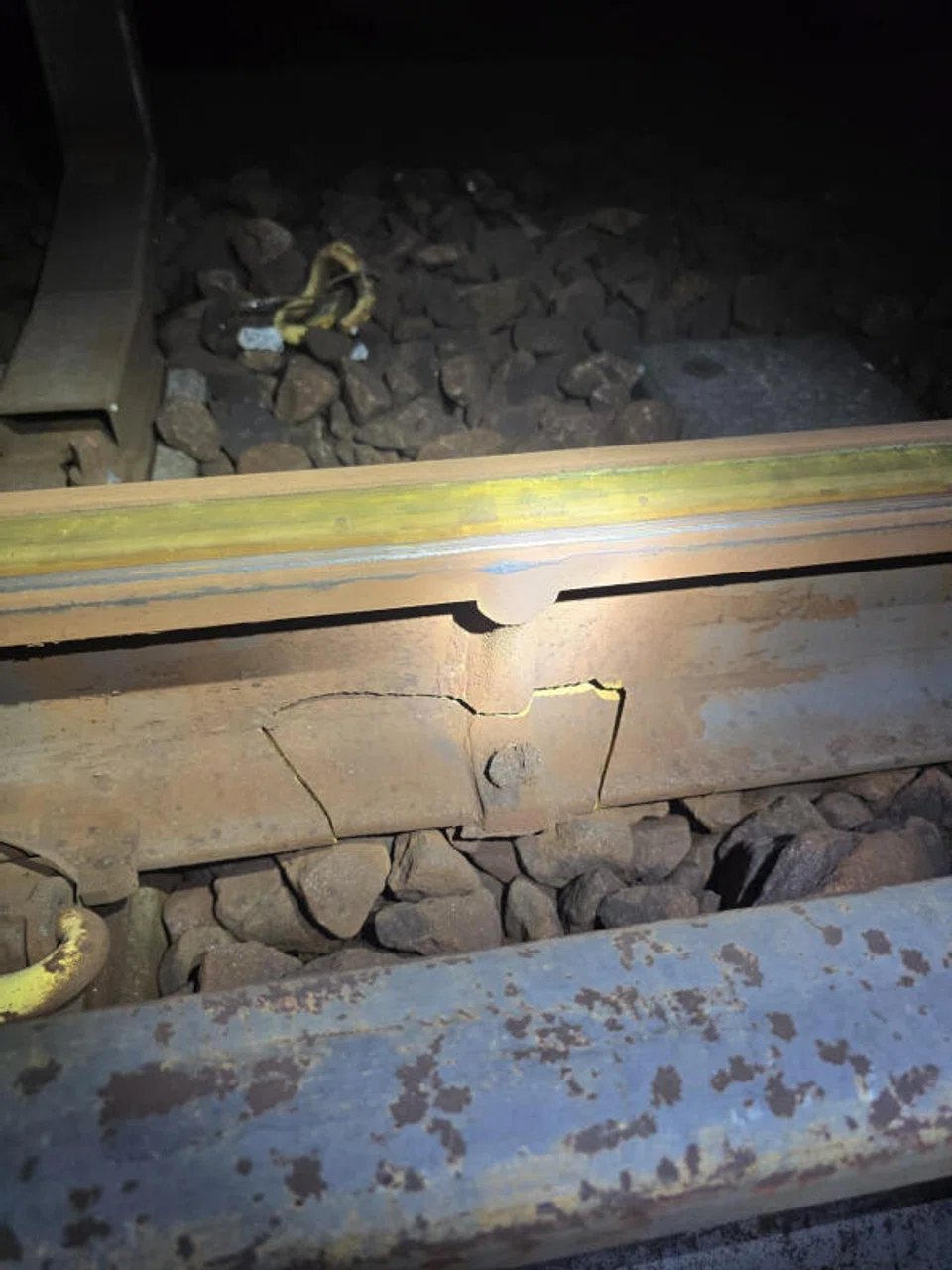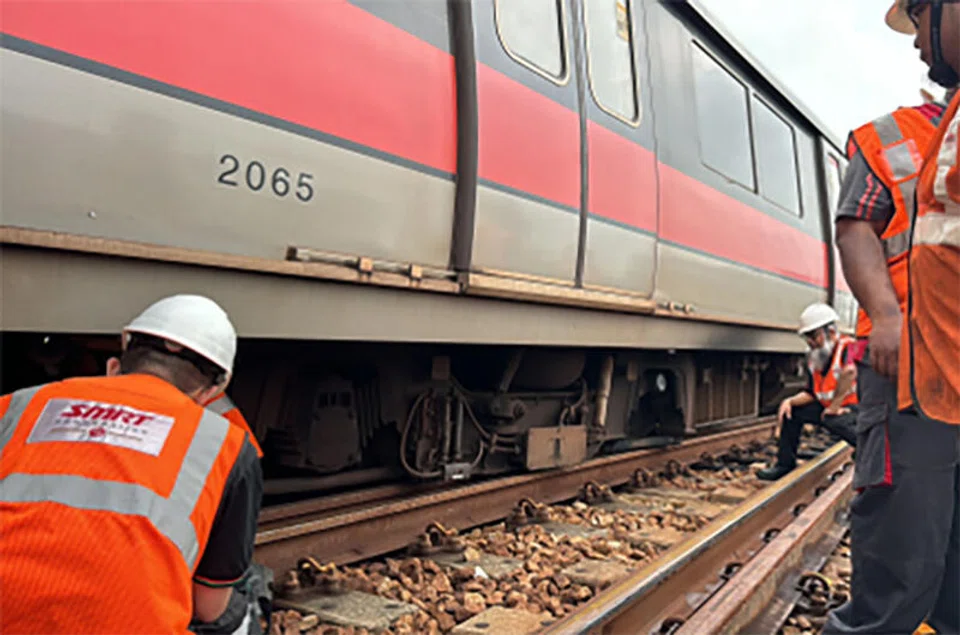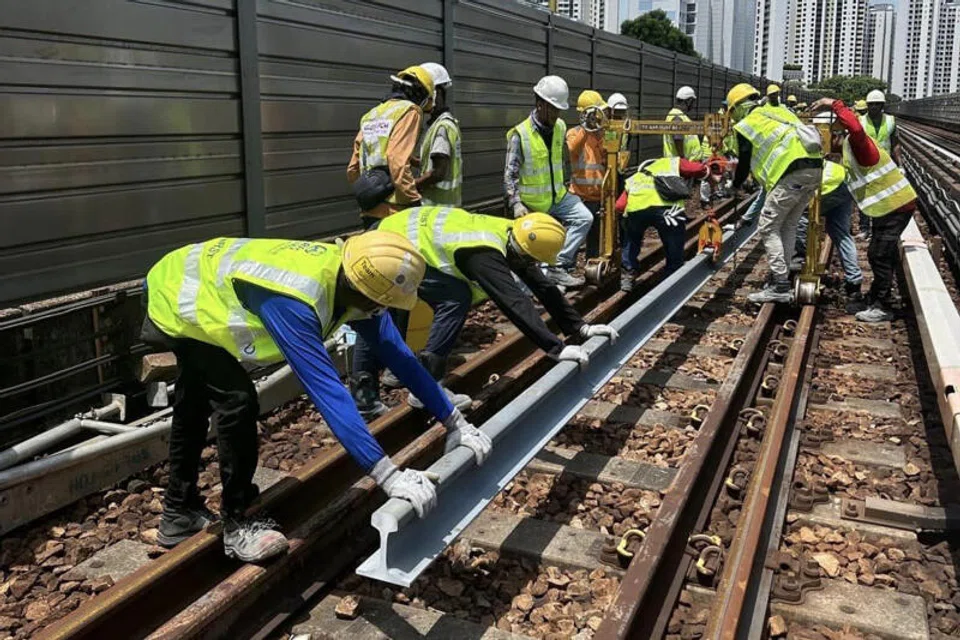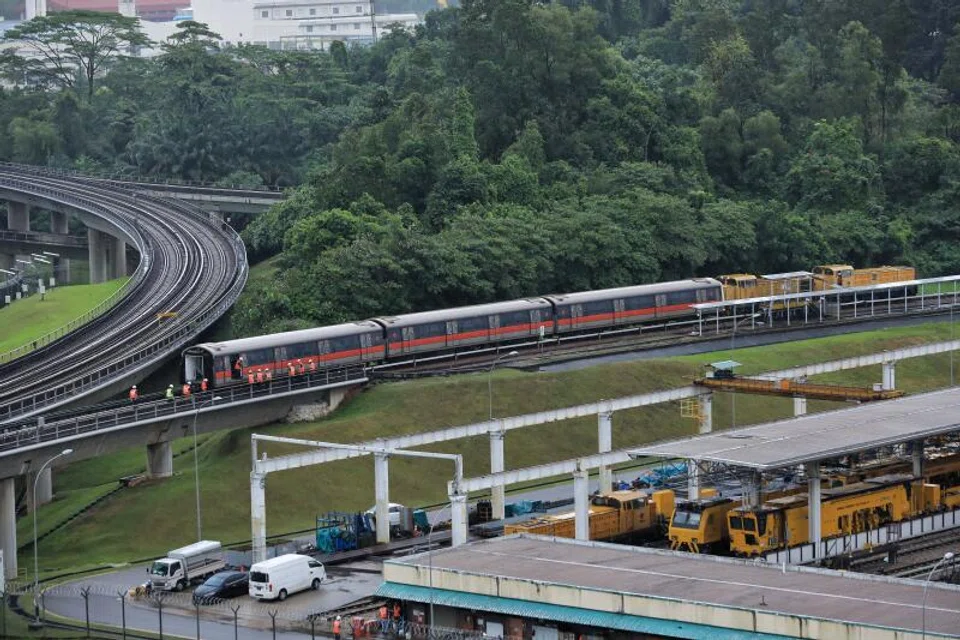Faulty train withdrawn from service caused 34 rail breaks between Dover and Clementi MRT stations
Vanessa Paige Chelvan
The Straits Times
Sept 26, 2024
A faulty train on its way back to Ulu Pandan Depot after being withdrawn from service left major damage in its wake on Sept 25, halting services on a stretch of the East-West Line (EWL) in a disruption that is expected to last for a few more days.
Working through the night to determine the extent of repairs needed, engineers found a total of 34 rail breaks - such as cracks or chips - on the westbound track between Dover and Clementi MRT stations.

Trains cannot safely operate until the damaged segments are replaced.
The stretch of damaged track is 1.6km long, and over 50 changes of rail would be required to repair the 34 breaks, based on initial calculations. This work was expected to start in the evening on Sept 26.
SMRT said it was aiming to resume full services between Jurong East and Buona Vista by Sept 30.
While the train was returning to the depot on the morning of Sept 25, an axle box on the third of its six carriages dropped onto the tracks near Dover station, causing one bogie, a part of the undercarriage, to come off the running rail.
With one bogie derailed, the train damaged the tracks and equipment on the tracks as it moved towards the depot.

The crippled train put three point machines, used to divert trains onto different tracks, out of operation and dislodged rail fasteners.
One point machine located between Jurong and Clementi MRT stations was so badly damaged that it cannot be salvaged and must be replaced. Stretches of the third rail, which supplies power to trains, along the eastbound track were also damaged, leaving power cables exposed.
Speaking to the media during a visit to the tracks leading to Ulu Pandan Depot late on Sept 26, Transport Minister Chee Hong Tat said more than 300 engineers and technicians from the Land Transport Authority (LTA) and SMRT have been working over the last 40 hours to conduct checks and repairs on the damaged tracks and equipment.
"As the damage is very extensive, they have to do this carefully, and it requires a lot of time. It is a challenging task," he said.
More than 30 rail segments - each weighing over a tonne - have to be replaced, said Mr Chee, who had just returned from a work trip in China.
The third rail and power cables also have to be replaced, while the point machines have to be carefully calibrated and aligned, he added.

Mr Chee thanked the staff for their hard work and commuters for their patience and understanding.
"We will do our best to finish the repair works in a safe manner as quickly as possible," he said.
Engineers had worked overnight to inspect and repair power-supplying and signalling equipment damaged by the derailed bogie.
They also attached a temporary axle box to the train - which had been stuck on a viaduct outside Ulu Pandan Depot - to make sure its wheels were secure.
Engineers then used a hydraulic system to move the wheels of the train back onto the track. Only then could it be pulled to the depot on the morning of Sept 26.

With the train marooned on the viaduct exposed to the elements, engineers were vulnerable to the rain, wind and risk of lightning, and had to pause work for safety reasons. Besides the wet weather on Sept 26, they were also hampered by the limited space to manoeuvre on the tracks.
ST understands that SMRT and LTA have all the supplies they need to complete repairs.
The faulty train is a first-generation Kawasaki Heavy Industries train that is currently being phased out. A total of 48 such trains - excluding the faulty one - are still in service, plying the North-South Line and EWL.
The EWL disruption affected about 358,000 passengers on Sept 25. An estimated 516,000 had their journeys disrupted on Sept 26.
